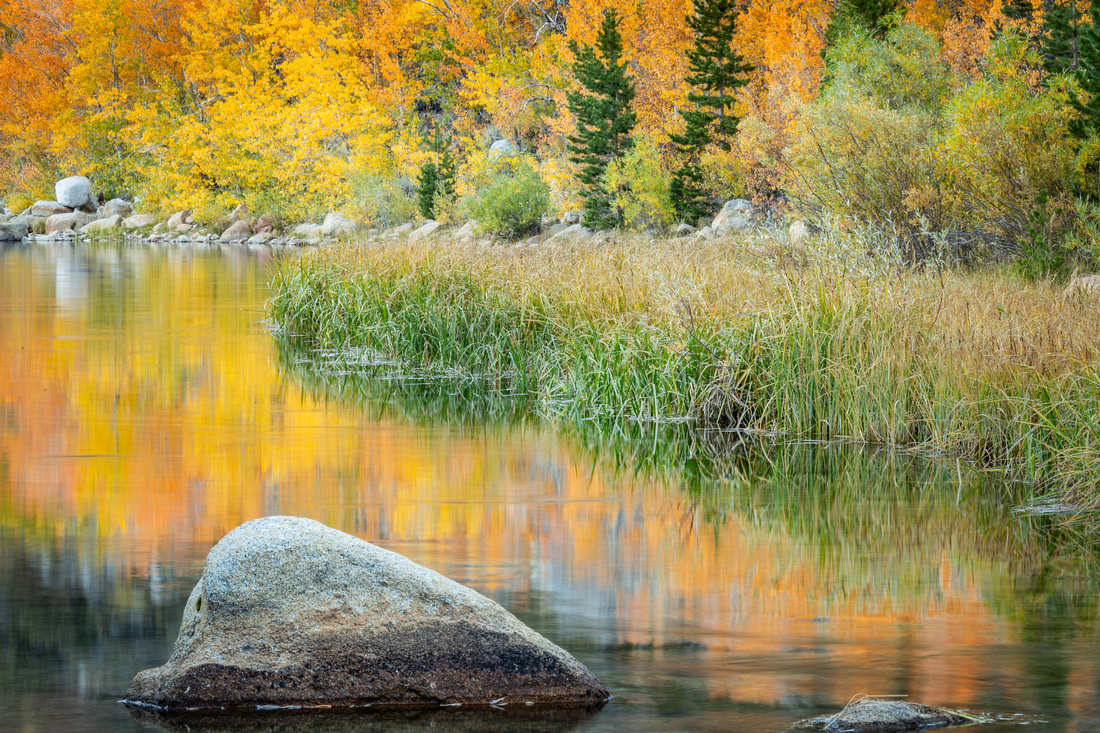Mirror image
Mirror Image: Reflections in Nature
Text and photos by Heather Cline
I don't know about you but I'm a sucker for a good reflection. If I see one while I'm out shooting to hiking I have to stop, set up my tripod and camera, so I don't miss capturing it. I guess I have FOMOOR (Fear Of Missing Out On Reflections) disorder. :) I wondered why that was so I started doing a little research and it turns out a lot of us are attracted to reflection images because they convey symmetry which we relate to balance, harmony, and order. When this is used to compose nature photos, it allows the viewer to connect to the subject or scene more deeply.
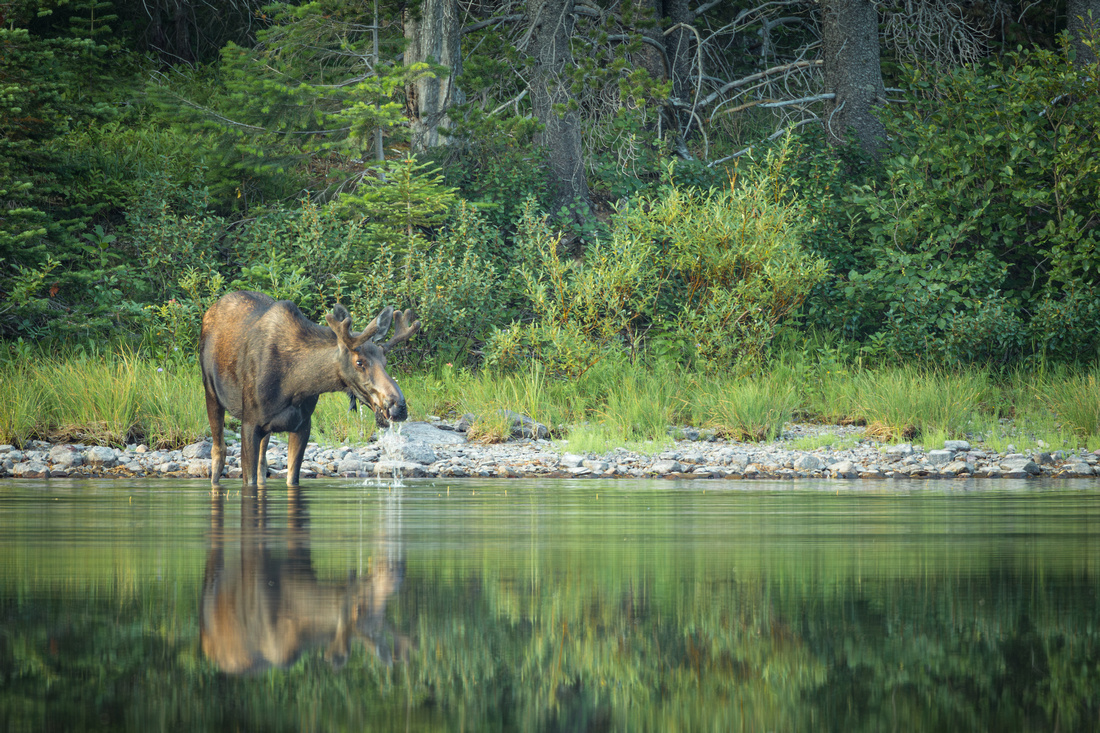 
Moose reflected in pond, Glacier National Park |
In this post, I'll provide a few quick tips for capturing impressive and unique nature reflection images.
Composing For Reflections
In all forms of photography, there are compositional rules that you can use to improve your images. One of the most well known rules is "The Rule of Thirds". The idea behind the rule of thirds is to break the image into thirds, horizontally and vertically, so there are nine parts. The theory is that if you place points of interest in the intersections or along the lines, your photo will be more balanced. When viewing images, peoples eyes naturally go to one of the intersection points, making this compositional rule a reliable option if you want to please the viewers eye. This is a good rule for beginner photographers because it can help break the habit of placing the subject in the center. Reflections is one type of image where you can break this rule with good results, and that is because of Symmetry, which happens to be another compositional rule! Here are a couple of examples to show how both of these work to create good results.
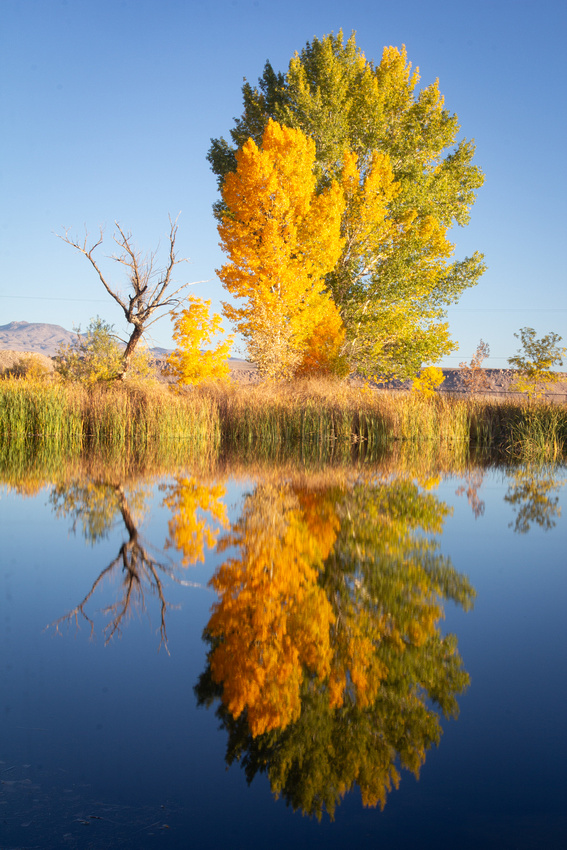 
Reflection using symmetry |
 
Same reflection, incorporating foreground elements |
To create the second image, I lowered my camera closer to the ground so I could maximize the amount of reflected surface and incorporate some foreground elements in the frame. These foreground elements also act as leading lines, directing the viewer through the image and on towards the focal point. By the way, Leading Lines is another compositional rule. Amazing how it all ties together, huh? ;)
The focal length of the lens you use will influence what is possible as well. A wide-angle lens will capture a larger scene, like mountains or expansive landscapes. A longer focal length can be used to focus just the reflection, which you can experiment with to create abstract and artistic results. If you are photographing a larger scene, you will want to use a smaller aperture to improve depth of field (example: f/16), ensuring all elements are in focus from the front to the back of the frame.
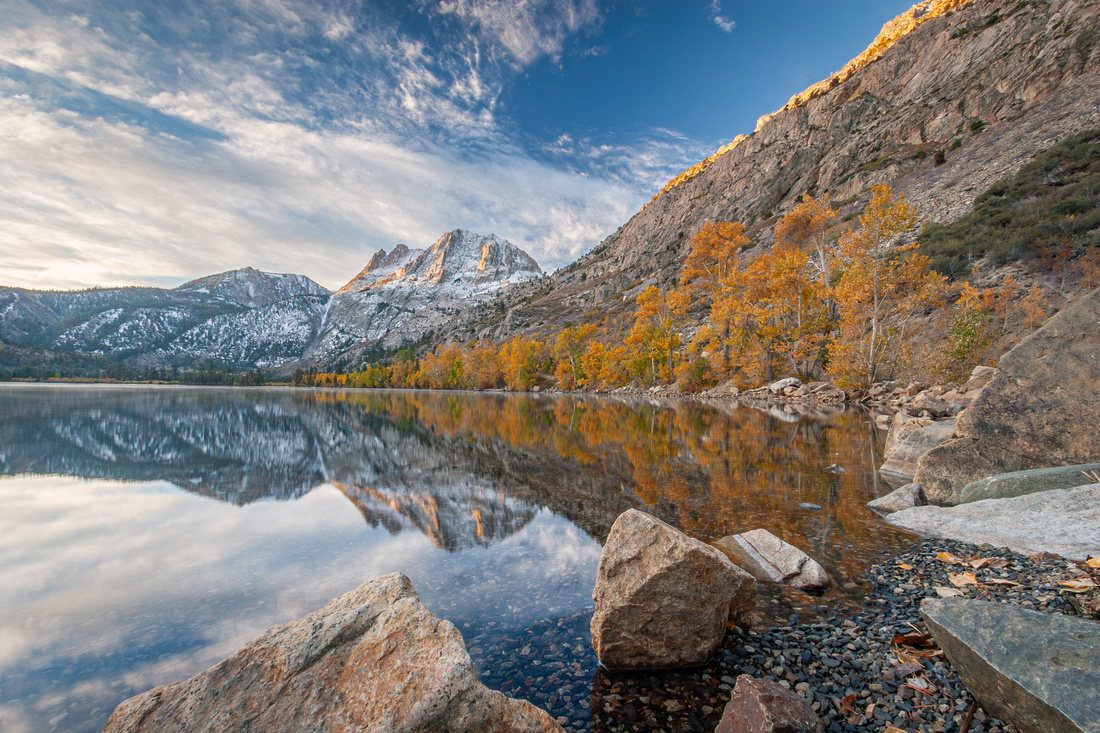 
Wide angle lens used to capture autumn sunrise reflections at Silver Lake |
In addition to the aperture, the shutter speed you choose will have an impact on the resulting image. A fast shutter speed will result in sharper images; great when you want that perfect mirror image. If you are looking for a crisp, mirror like reflection, you want to avoid wind as it will cause ripples or waves that disrupt the reflection. Winds are often calmer at dawn and dusk. A slower shutter speed can be used to create a smooth, blurred affect. If the wind has picked up and you are looking for a way to recover, try lengthening your shutter speed to experiment with blurred and abstract reflections. These can return equally beautiful results.
|
|
Exposing For Reflections
You may notice that the reflection of the subject and/or scene is a bit darker than the actual subject or scene, and this is expected since some of the light is lost in the reflection. To ensure you retain detail in the shadows without blowing out the highlights, you can use a graduated neutral density filter to help balance the scene and reflection. If you don't have one of these in your kit, fret not, you can also shoot multiple exposures of the same image and merge them in post process to ensure details are presents in all important areas of the image. Most post processing tools offer an HDR (High Dynamic Range) merger feature these days.
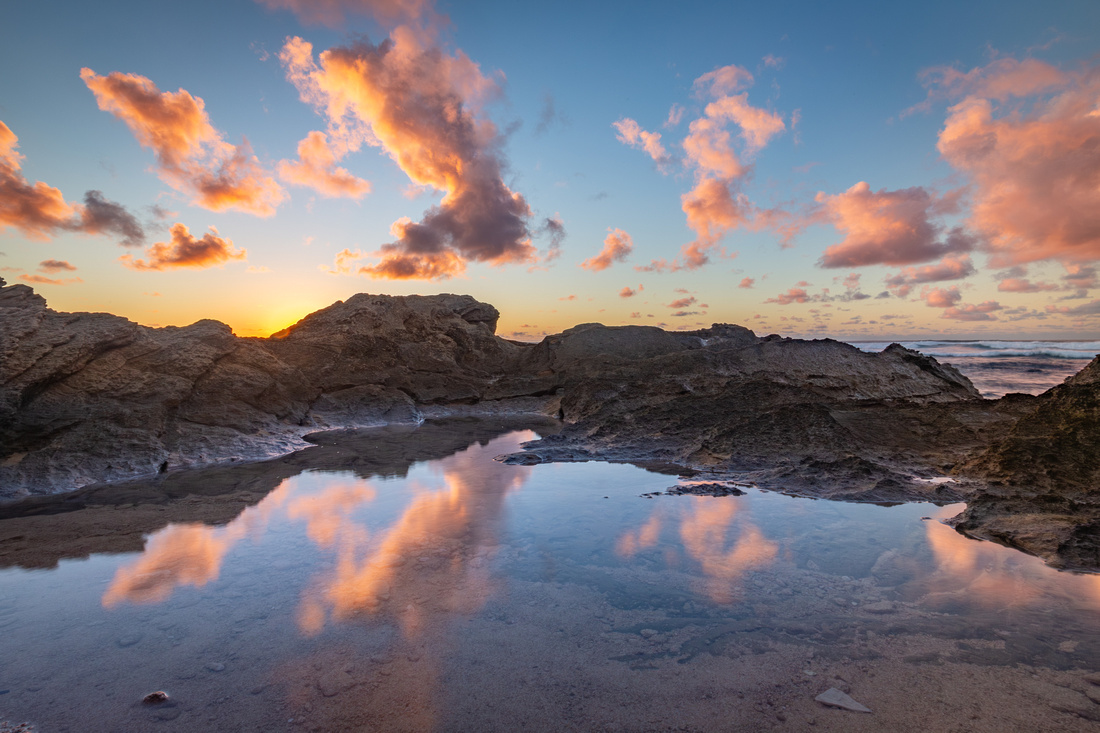 
Clouds at sunrise reflected in a tide pool, Kauai |
To ensure proper exposure, shoot reflections when the lighting is optimal and that is when it is low in the sky. Dawn and dusk are great times to shoot for this type of light, but you might be able to extend this to the morning and later afternoon depending on the time of year and location. You just want to avoid bright overhead lighting that dominates the middle of the day.
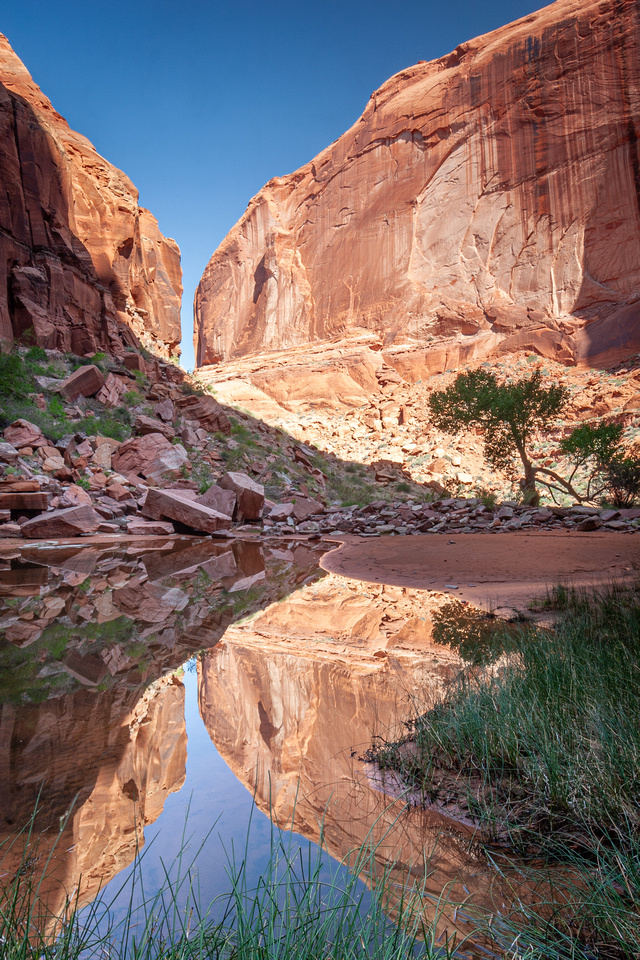 
Late afternoon light on canyon walls reflected in a small shaded pool |
This is one time when you might want to remove the polarizing filter because its job is to reduce glare and reflections, but it's also good to experiment with it to see if you can cut the glare just on the foreground elements to improve the composition.
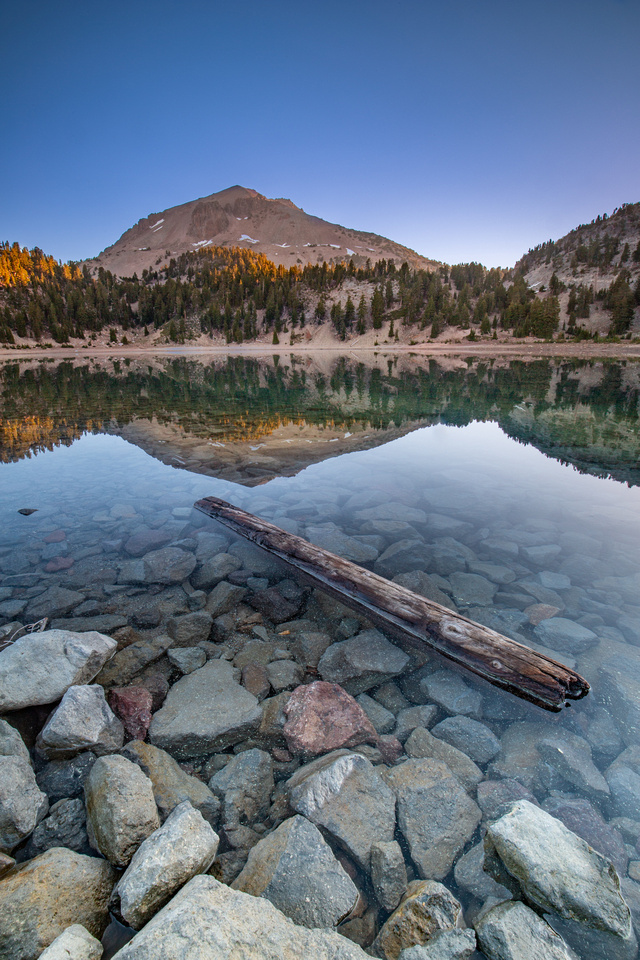  Log and rocks exposed at the base of Lake Helen in Lassen NP, using a polarizing filter
Log and rocks exposed at the base of Lake Helen in Lassen NP, using a polarizing filter |
Reflection Sources
The most common sources of reflections are lakes and ponds but you can find reflections in tide pools, puddles, or slow moving creeks/streams. If you are spend more time in urban areas, glass and mirrors are excellent sources as well.
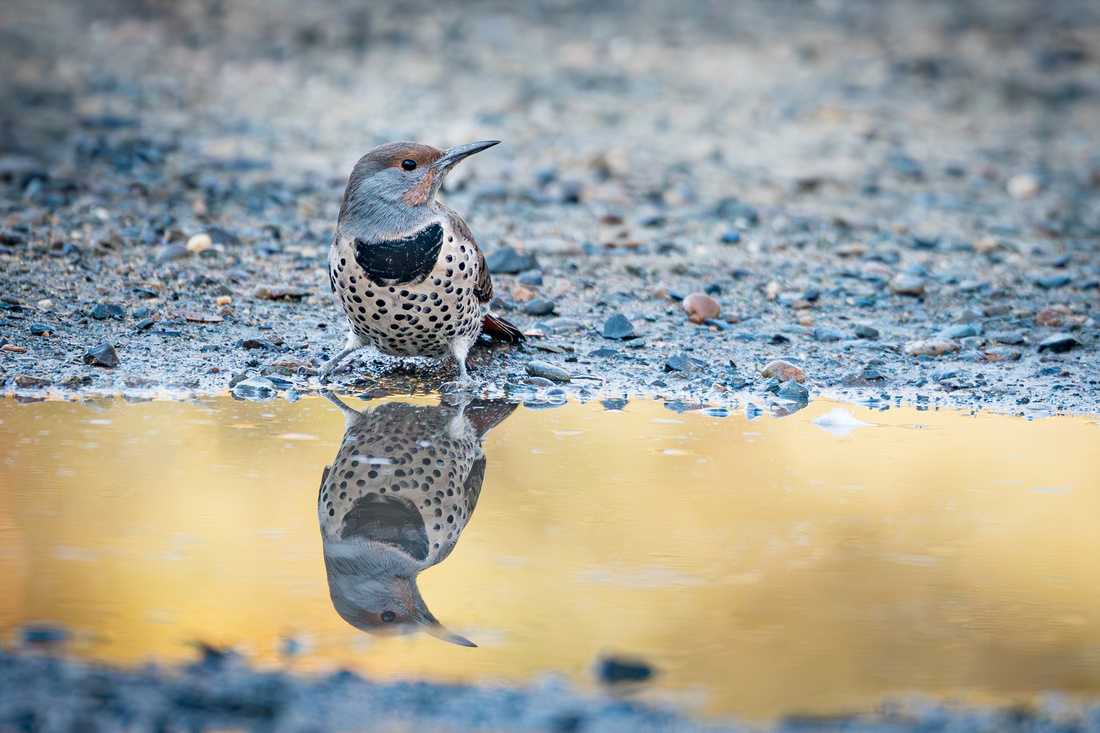 
A Northern Flicker drinking from a puddle the morning after a rainstorm |
Unique Results
While sweeping landscapes with mountains and tree lines make excellent reflections, smaller subjects can produce unique results that help your images stand out. I think these are some of the most fun reflections because you can crop and rotate to create entirely new images out of something that most others would have walked right by.
 
A log that when turned on it's side, kind of looks like a sloth. I call this "Sloth Log" |
Reflecting on the information covered here (pun intended), we are entering a season when the colors are going to become more bold and the sunsets are going to get more dramatic so there is no better time than now to start experimenting with reflection photography. I hope this post has helped provide you some tips for creating your best reflection images.
